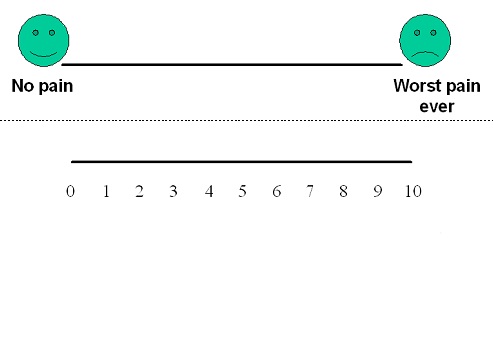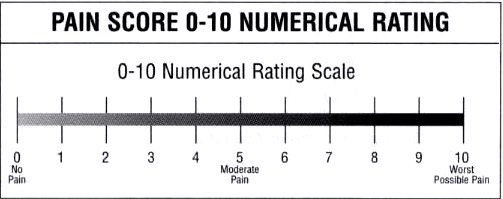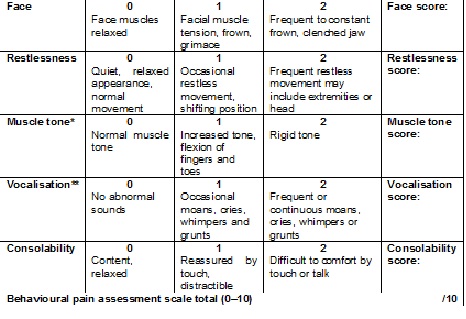Enhance your health with free online physiotherapy exercise lessons and videos about various disease and health condition
Pain Rating Scale
Pain rating scale instructions
Mentioned below are some Important pain rating scales for clinical use
Subjective pain score
All patients are to have a functional activity score recorded in addition to the chosen subjective score.
Visual analogue scale (VAS)
Instruct the patient to point to the position on the line between the faces to indicate how much pain they are currently feeling. The far left end indicates ‘No pain’ and the far right end indicates ‘Worst pain ever’.
VAS is a simple assessment tool consisting of a 10 cm line with 0 on one end, representing no pain, and 10 on the other, representing the worst pain ever experienced, which a patient indicates so the clinician knows the severity of his or her pain. Vas have been used in the social and behavioural sciences to measures variety of phenomena.

Numerical rating scale (NRS)
Instruct the patient to choose a number from 0 to 10 that best describes their current pain. 0 would mean ‘No pain’ and 10 would mean ‘Worst possible pain’.

Faces rating scale (FRS)
Adults who have difficulty using the numbers on the visual/numerical rating scales can be assisted with the use of the six facial expressions suggesting various pain intensities. Ask the patient to choose the face that best describes how they feel. The far left face indicates ‘No hurt’ and the far right face indicates ‘Hurts worst’. Document number below the face chosen.
pain scale faces

Behavioural pain rating scale
The behavioural pain scale is designed for use with non-verbal patients unable to provide self-reports of pain.
- Rate each of the five measurement categories (0,1 or 2).
- Add these together.
- Document the total pain score out of 10.

Read research articles about pain scales validity on PubMed
Functional activity score
This is an activity-related score. Ask your patient to perform an activity related to their painful area (for example, deep breathe and cough for thoracic injury or move affected leg for lower limb pain).
Observe your patient during the chosen activity and score A, B or C.
- A – No limitation meaning the patient’s activity is unrestricted by pain.
- B – Mild limitation means the patient’s activity is mild to moderately restricted by pain.
- C - Severe limitation means the patient ability to perform the activity is severely limited by pain.
*Relative to baseline refers to any restriction above any pre–existing condition the patient may already have.

Return from Pain Rating Scale to Home Page
Recent Articles
|
Author's Pick
Rating: 4.4 Votes: 252 |

